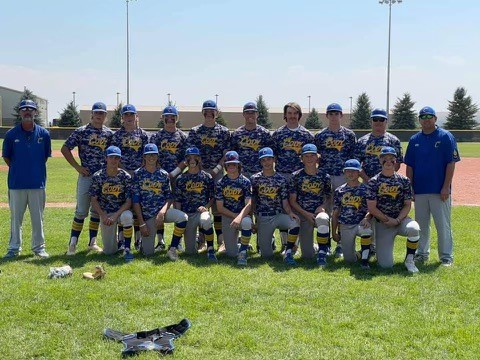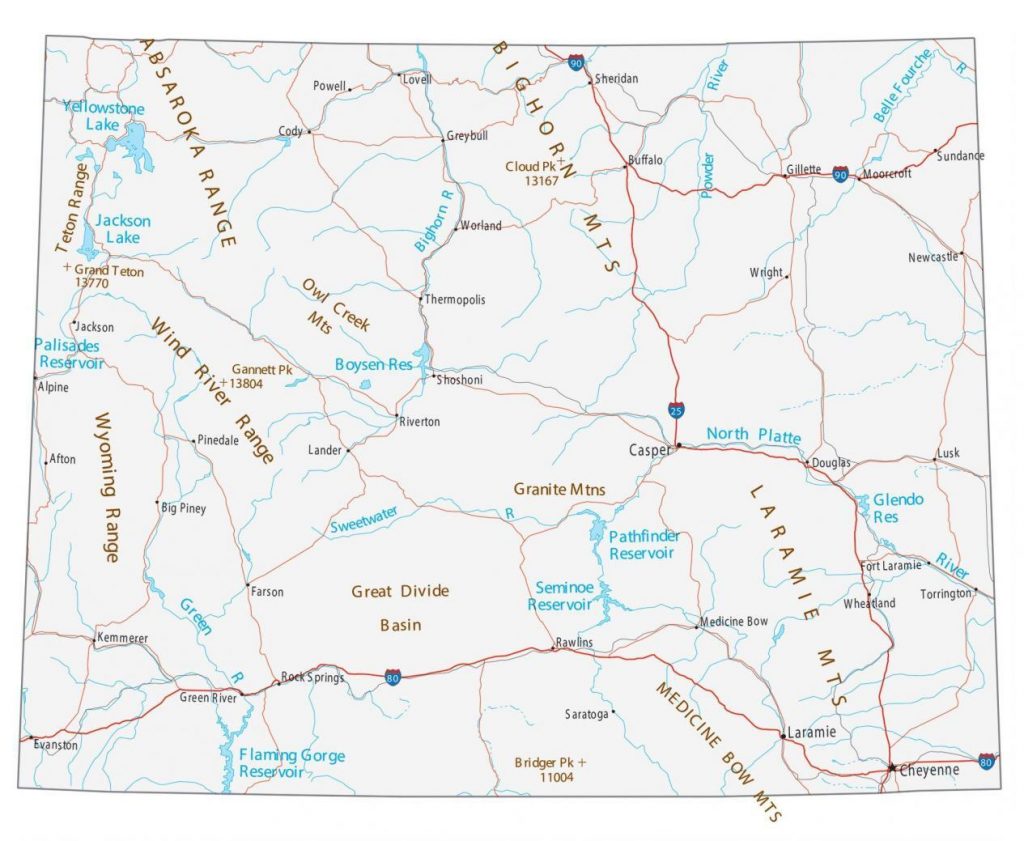Northeastern Wyoming Rebranding Itself As Coal Research Hub
Written by Associated Press on July 19, 2021
GILLETTE, Wyo. (AP) — Going carb-free may be the diet du jour for people looking to drop a few pounds, but when it comes to re-imagining the Powder River Basin’s coal-dependent economy, many believe in carbon-loading.
Even as PRB thermal coal production has declined by more than 50% over the past decade, more research, innovation and development is being pushed to find ways to make coal clean to use and much more valuable.
A push to develop the PRB and its 25 billion tons of available coal to spark a new carbon economy for northeast Wyoming aims to evolve the region into the Carbon Valley. Like what California’s Silicon Valley has achieved to become the world’s leading hub of computer and technology development, local, state and federal officials are banking on the Carbon Valley to advance new carbon industries that go well beyond just burning coal.
It makes sense that northeast Wyoming could become the nation’s Carbon Valley, and the region is well on its way to earning the nickname, said Rusty Bell, a Campbell County commissioner and supporter of the initiative.
“We already are that kind of area, and the reason I say that is we’re sitting on the resource already,” Bell told the Gillette News Record. “We’re sitting on 25 billion tons of recoverable coal. We want to use it.
“Whether we use it for energy production or something else, we should be looking forward because our miners don’t care what they’re going to do with that coal.”
Treating coal as an ore allows producers and manufacturers to take the base carbon from coal and use it to make much more valuable, useful and climate-neutral products, Bell said.
Things like carbon nanofiber and graphine are two examples of things that can be made from coal ore that potentially could be worth thousands of times more than the $11-$12 per ton it’s worth to burn to produce electricity.
‘Too valuable to burn’
One company on the leading edge of creating this new Carbon Valley is Ramaco Carbon, a private endeavor near Sheridan that has built a combination research/incubator facilities that can take coal and turn it into valuable carbon products.
One facility, called the iCAM research park, provides space for higher education, national laboratories and private companies to research and prove their coal-to-carbon innovations, said Randall Atkins, Ramaco CEO and chairman of the National Coal Council.
“We started really trying to approach alternative uses for coal about six or seven years ago and have pretty much been at the forefront of that,” Atkins said.
The company also runs its iPARK manufacturing center, which is next to the Brook coal mine. Like locating a power plant at the mouth of a coal mine, Atkins said a Carbon Valley approach could easily see at least one, if not many, manufacturing facilities at the mouth of a mine in the future.
“There’s a real future for using coal in an alternative manner that has been explored going back to the late 1970s and early ’80s when the Department of Energy did a lot of funding for research on coal to liquids,” Atkins said. “At the time, we thought we were going to run out of oil and that oil was going to be $300 a barrel.
“Needless to say, that didn’t go anywhere. But what we’ve done now is borrow some of that technology and done a fast-forward 30-40 years with technology and new materials and have incubated the first coal-to-products vertically integrated platform.”
The iCAM is expected to come online within the next few weeks, Atkins said, adding that he anticipates it will be a model for other Carbon Valley-motivated efforts.
“What I thought about when I originally coined the concept is finding advanced technology … for a whole new use of coal,” he said.
Economically, the evolution could be as significant as other historical technological breakthroughs, Atkins said.
“Coal is too valuable too burn,” he said. “We believe that wholeheartedly.”
The carbon from the same Powder River Basin coal that now sells for about $12 a ton can potentially be translated into a value of $100 million a ton, he said.
Aktins testified for the U.S. Senate in April about how China already is investing money and manpower into the coal-to-carbon transition.
“Their economy is really coal-based from a chemical standpoint because they really don’t have any petroleum,” he said.
To that end, he said China is now building an average of a new plant a week to create carbon-based chemicals that soon could be going through 1 billion tons of coal a year.
That means the PRB doesn’t necessarily have to see its production continue to shrink, Atkins said. It’s gone from producing 426 million tons in 2011 to about 207 million tons last year.
“If you get the right uses, it will still require large amounts of coal,” he said. “The largest uses of thermal coal will be building products … as well as things from carbon fiber. Those can use large amounts of coal.”
Not reinventing the wheel
While words like “innovation,” “advanced” and “breakthrough” are often used in describing what creating a new Carbon Valley could mean for coal, it’s hardly a new concept, Atkins said.
“A hundred years ago, we did use coal to make a number of products,” he said. “Then the catalytic converter came along in the 1920s. They discovered you could use petroleum much easier for this type of conversion.”
With a century of technological advancement, Ramaco has “dusted off the playbook and found some pretty exciting new uses for it and to basically unlock the carbon in the coal.”
One of the major hurdles now is a fundamental prejudice against coal, Atkins said.
“The problem has been the mindset that coal is a four-letter word and there are those who would prefer no new coal would be mined,” Atkins said.
While a problem, getting people and industry to think of coal more as a source of carbon rather than a fossil fuel will happen over time, Bell said.
“The whole concept of the Carbon Valley is we’re going to continue to ship our coal, but we’re also going to find ways to make it carbon neutral, or even carbon negative,” he said.
To that end, the Wyoming Innovation Center recently broke ground on its carbon research incubator in Campbell County. In partnership with the University of Wyoming, the WIC is similar to Ramaco’s iCAM in that it’s geared toward not only researching ways to use PRB carbon, but monetizing it.
“That facility is not just talk to see if this works,” Bell said. “They’re going to be testing things at the university level and try to scale those up and pre-commercialize those. We don’t want to study these things forever, we want to start commercializing things.”
A leave-it-in-the-ground attitude toward coal is not practical, he said, adding that economic diversification for the PRB has to happen with coal, not around it.
To do otherwise “is like someone sitting on the coast and trying to get away from fishing as an industry,” Bell said.
All things carbon
Another way the region is positioning itself as the nation’s Carbon Valley is by embracing many types of carbon research and usage. That includes ongoing efforts to capture, sequester and reuse carbon dioxide emissions from coal-fired power plants.
Extracting the CO2 from industrial emissions not only provides a potentially valuable source of carbon to make any number of products, it also helps solve one of the globe’s greatest industrial problems. Turning hazardous waste CO2 into something valuable is driving a number of efforts around Gillette.
Private industry also has targeted Campbell County for research or making carbon-based products.
Clean Coal Technologies has worked with UW researchers to redesign and refine its process of drying coal in a way that keeps the mineral stable. The result is a much lighter coal that burns cleaner and produces comparable energy output to untreated.
Atlas Carbon uses a proprietary process to create activated carbon products for water and air filter systems from Powder River Basin coal and has been a model for showing there are other uses for the commodity than burning it.
At the Integrated Test Center, TDA Research Inc. of Colorado tested one of its carbon capture technologies. Kawasaki Heavy Industries of Japan also has committed to do research at the facility as has the Japan Coal Energy Center.
With the conclusion of the NRG COSIA Carbon XPrize earlier this year, which used the ITC to research and prove CO2 capture and reuse technologies, the facility is expanding its profile. Recent large project commitments for the ITC means the center has surpassed $100 million in research and development money for tenants.
“The goal of the ITC was always to help scale up (carbon capture) technologies to commercialization,” said Jason Begger, the ITC’s managing director. “We have had tenants successfully complete testing at different scales and have more lined up to test onsite over the next 18 months.”
The Integrated Test Center has become one of the world’s most prominent CO2 capture and reuse research facilities and the CarbonSAFE initiative has already passed a number of research phases to show the potential for storing captured CO2 beneath the Powder River Basin.
Carbon Valley is more than a vision or hope at this point, said U.S. Rep. Liz Cheney, R-Wyoming.
“It’s definitely an area where we’ve already begun to lead the way,” she said. “In a lot of areas, Wyoming is demonstrating how important these technologies are, particularly what’s happening at the ITC and the projects the Department of Energy have selected for carbon capture.”
She said the potential is real and that “the money and the resources are going into what can really become a model for the rest of the country. … I’m excited about what’s going on and I think there’s a lot of interest in what we’re doing.”
The all-of-the-above approach to carbon also means there’s still room at the table for coal-fired energy, especially if it comes with ways to capture and repurpose CO2 emissions, said U.S. Sen. John Barrasso, R-Wyoming.
“Energy really is the bread and butter and our country needs all the sources of energy it can get,” he said.
“Wyoming has been leading the way with (carbon) innovation, and that’s what we need — innovate rather than having punishing government mandates.”
Carbon Valley is an evolution and focusing of efforts to keep Wyoming’s most abundant resource relevant, said Barrasso, who also is the ranking member of the Senate Committee on Energy and Natural Resources.
“Raw coal can be mined, it can be treated, it can be refined to be used in high-tech, high-value products,” he said.
At the federal level, Barrasso and Cheney both said they continue to push legislation that encourages and incentivizes Carbon Valley research and development.
“What we can do as the federal government is to make a difference for the economy in Northeast Wyoming,” Barrasso said. “We have to continue to add value to our coal and energy resources.”




